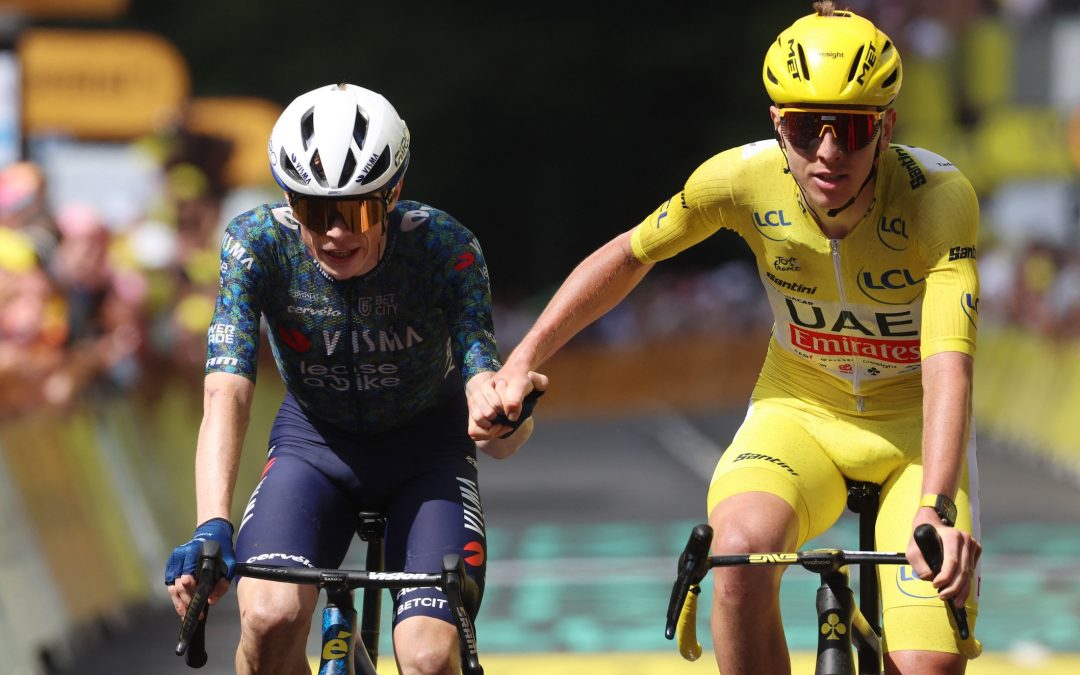Welcome to the 2024 edition of What The Tour de France Can Teach You About Advertising. This is my annual post where I use professional bicycling’s Tour de France to illustrate ways to improve your advertising. You can catch up on previous entries here.
The 2024 Tour de France was expected to be a battle between the two top cyclists in the world, Tadej Pogacar and Jonas Vingegaard. Vingegaard had won the last two Tours and Pogacar took the two before that. But as the season evolved, questions arose about each.
Pogacar raced in, and won, the Giro d’Italia in May. In the old days, cyclists would ride in all the “Grand Tours” (the Tour of France, Giro d’Italia and Vuelta a Espana). Today, however, the Tour de France is considered the Super Bowl of cycling. As such, many top cyclists orient their season and training around that race. And given that, some questioned whether Pogacar could recover fully to be in top shape in France.
The questions were even greater for Vingegaard after he suffered a broken collarbone, broken ribs and collapsed lung in a crash in April. For most cyclists, the broken bones would be enough to throw off their training. But the collapsed lung also kept Vingegaard in the hospital for 12 days. That was huge since it’s generally believed a cyclist can lose up to 10% of his or her VO2 max (the body’s ability to efficiently transport oxygen to the muscles) after two weeks off the bike. Vingegaard’s hopes suffered another blow when several of his team’s top support riders were lost to injury or illness before the Tour. Ultimately, his participation in the Tour de France wasn’t confirmed until about two weeks before the start.
Reaching Peak Performance
It was once accepted for pro cyclists to arrive at the Tour de France in not-quite-top shape and use the early stages of the race to “round into form.” Since then, biometrics, data analysis, VO2 measurement, power meters and many other factors have entered the equation. Thus, riders can now train to be at “peak fitness” for specific races.
To reach peak fitness, pro cyclists and other endurance athletes focus on high-intensity training while monitoring the factors above. However, too much high-intensity training can negatively affect an athlete’s fitness. And that’s why professional cyclists structure their training to alternate between attaining peak fitness and more relaxed periods designed for rest and recovery.
Tadej Pogacar showed he could recover from his win at the Giro and still be able to win in France. However, Vingegaard looked to be close, but not quite in top form for le Tour. Though finishing second and even winning a mountain stage, Vingegaard lacked the top speed and fitness that Pogacar displayed throughout the race. Not even his stupid-looking, incomparably large time trial helmet could help Vingegaard bridge the gap.
Maximizing Your Advertising Performance
So what does this have to do with your company’s advertising? Remember that advertising is about impressions. That means, keeping your brand in front of your customers as often as possible. It means keeping your customers “conditioned” to your brand and message so that they know what you stand for and what you can deliver. To do that, focus on an ad program that broadcasts your message at regular intervals rather than one big splash. Then, when you do hit your peak period, you can amp up your advertising and take advantage of the “conditioning” you’ve already done.
Perhaps the most vivid example of the idea of conditioning your audience is the Super Bowl. For big advertisers, the Super Bowl is an expensive way to burnish their brand with flashy ads. However, those ads may have nothing to do with their goods or services. The brands get away with that by advertising throughout the year, so their brand is already familiar to consumers. But, almost every year, there may be one or two Super Bowl advertisers that no one has heard of. Getting overlooked on Super Bowl Sunday is easy, but the unknowns trying to make a splash are often forgotten quickly.
So how can you maximize your advertising performance? Simply put together a 12-month advertising plan that maps out your ad strategy forthcoming year. Plan to spend more during your peak sales periods. But, to maximize your advertising performance, spread other advertising expenditures throughout different periods as well. By putting in the work during your slower periods, you can ensure your advertising during peak periods gets maximum results.
Pro cyclists put in hours of work to perform their best at the Tour. And with a little bit of effort, you can tune your ad plan for maximum performance for your business, as well. Simply keep your brand and messaging visible consistently so, that when you hit your peak periods, your advertising will have a strong impact. That way, you’ll get peak performance for your advertising dollar, too.

